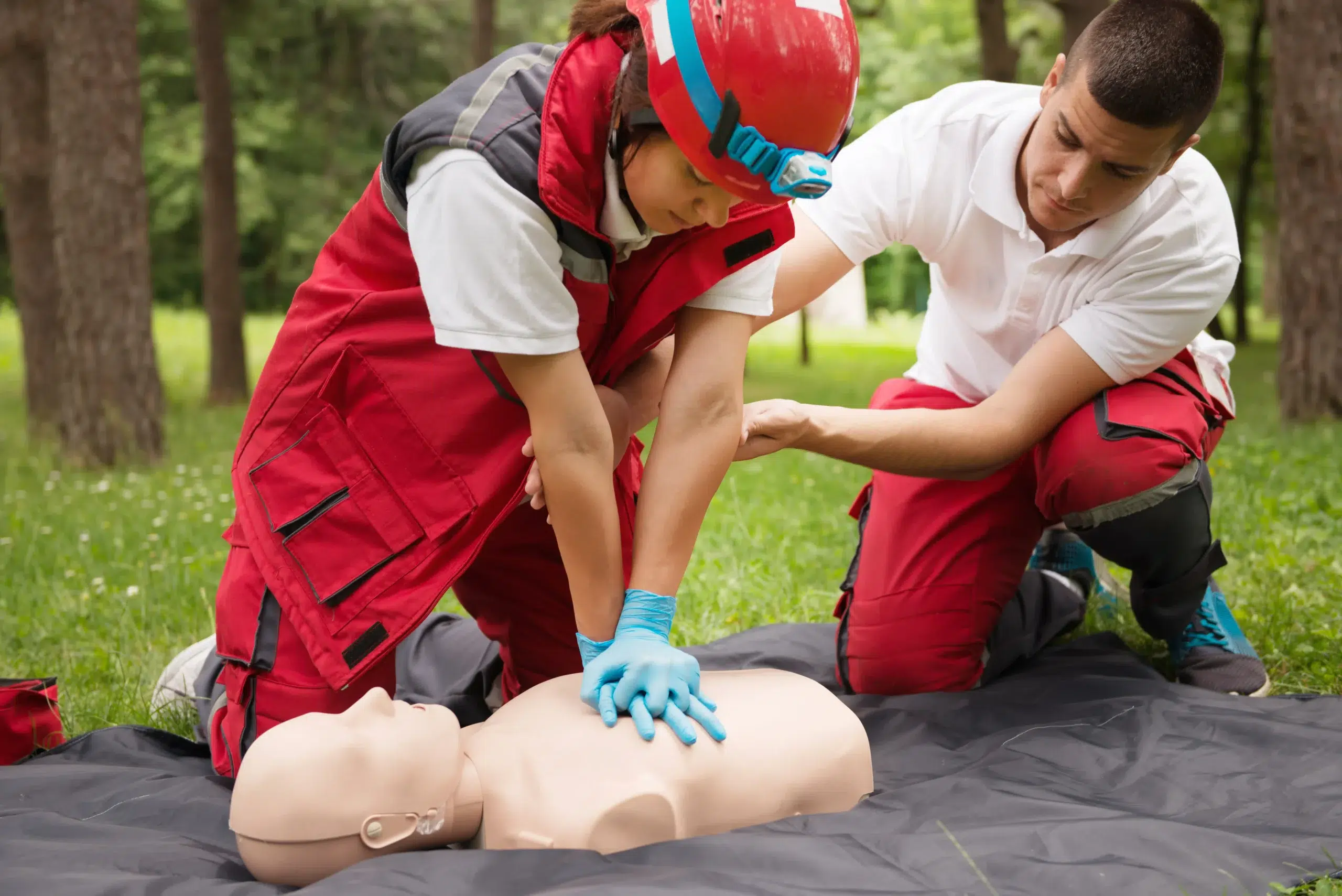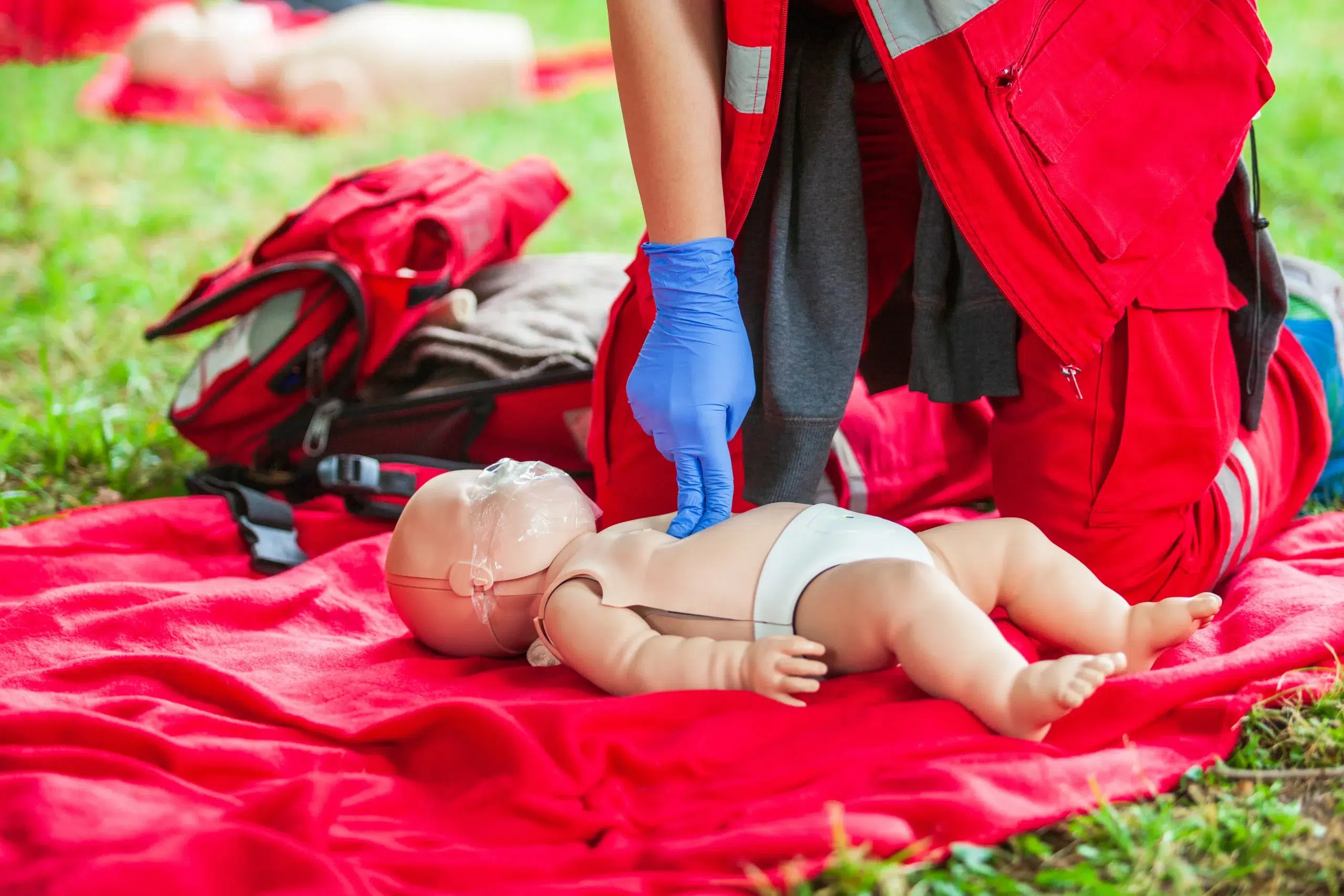Empowering yourself with life-saving skills has never been more crucial. Learning CPR can transform you from a bystander into a potential lifesaver, equipped to handle emergencies with confidence and skill. This comprehensive guide explores the importance of CPR training in Dublin, guiding you through various course options, costs, and what to expect during training. Whether you’re a concerned parent, a healthcare professional, or simply someone who wants to make a difference, this guide will help you find the perfect CPR training program to suit your needs. We’ll cover everything from basic CPR and first aid to specialized courses like pediatric CPR and advanced life support. Let’s dive in and discover how CPR training in Dublin can empower you to save lives.
Key Takeaways
- CPR skills are essential for everyone: Learning CPR, regardless of your background, equips you to handle medical emergencies and potentially save a life. Explore various CPR course options to find one that suits your needs.
- Find the right CPR course by researching providers: Compare course content, certifications offered, teaching styles, and schedule flexibility to make an informed decision. Reviews from other students can offer valuable insights.
- CPR certification provides lasting benefits: Getting certified not only validates your skills but can also boost your resume and increase job opportunities. A CPR certification demonstrates your commitment to safety and preparedness.
Why CPR Training Matters
Knowing CPR can be the difference between life and death. It’s a powerful skill that empowers you to act quickly and confidently during medical emergencies. CPR can dramatically increase survival rates after cardiac arrest, sometimes doubling or even tripling the chances of someone pulling through. CPR Guardians discuss common myths about CPR and emphasize its importance. Learning CPR means you’re prepared to provide immediate assistance until professional medical help arrives.
Even basic first aid training, including CPR, makes you a valuable asset in any setting. You can provide support to occupational first aiders in professional environments, ensuring there’s always someone ready to step in. The Dublin Training Academy explains the benefits of basic first aid training with CPR. And if you’re ever faced with a cardiac arrest situation where traditional CPR isn’t possible, remember that Hands-Only CPR can still significantly improve someone’s odds of survival. Irish Heart provides more information on the effectiveness of Hands-Only CPR. Taking a CPR course equips you with the knowledge and skills to confidently perform CPR and potentially save a life. The Australian Training Institute emphasizes the importance of CPR training and debunks common misconceptions.
Find CPR Training in Dublin
Finding the right CPR training in Dublin depends on your specific needs. Several organizations offer various courses, from basic CPR for the public to advanced certifications for healthcare professionals. Here’s a breakdown of some prominent providers:
Irish Heart Foundation
The Irish Heart Foundation is a leading resource for CPR training in Ireland. They offer various courses designed for the general public, instructors, and healthcare providers. They even have a free video-based CPR program for post-primary schools, a great way to introduce CPR skills to younger generations.
Safety Training Seminars
If you’re looking for American Heart Association (AHA) certified courses, Safety Training Seminars provides CPR, BLS, ACLS, PALS, and First Aid training in Dublin, CA. Their daily classes and extended office hours (8 am to 10 pm) offer flexibility for busy schedules.
Danville CPR Classes
Known for excellent customer service and competitive pricing, Danville CPR Classes offers various CPR courses to meet diverse needs. They claim to have the lowest prices in Alameda County.
St John Ambulance Ireland
St John Ambulance is a well-respected provider of first aid and CPR training throughout Ireland. They offer a comprehensive range of courses suitable for individuals, workplaces, and community groups.
Dublin Fire Brigade
The Dublin Fire Brigade plays a vital role in community safety and offers CPR training as part of their community outreach. Check their website or contact them for upcoming training opportunities.
Irish Red Cross
The Irish Red Cross is a trusted source for first aid and CPR training in Ireland. They offer various courses designed to empower individuals with the knowledge and skills to handle emergency situations.
CPR Course Types and Content
Knowing which CPR course is right for you can feel overwhelming with so many options. This section breaks down the most common types of CPR training, including adult, pediatric, and advanced life support. We’ll also cover the benefits of combined first aid/CPR courses and the increasing popularity of online and blended learning options.
Adult CPR
Adult CPR courses focus on rescuing unresponsive adults. You’ll learn to recognize the signs of cardiac arrest, perform chest compressions, and give rescue breaths. These courses also typically cover using an automated external defibrillator (AED), a portable device that can help restore a normal heart rhythm. Many adult CPR courses, like those offered by the Irish Heart Foundation, also include training on relieving choking. This prepares you to handle a range of emergencies.
Pediatric CPR
Pediatric CPR courses teach you how to respond to emergencies involving infants and children. Because their bodies are different from adults, CPR techniques are modified. You’ll learn how to perform CPR on small children and infants, recognize age-specific signs of distress, and address choking hazards. These skills are invaluable for parents, caregivers, and anyone working with children. The American Heart Association offers detailed resources on pediatric CPR guidelines.
Advanced Life Support (BLS)
Basic Life Support (BLS) courses are designed for healthcare providers and other professionals needing a more in-depth understanding of CPR. BLS builds upon the fundamentals of CPR, adding advanced skills like using a bag-valve mask (BVM) for ventilation and working as part of a resuscitation team. These courses often cover a wider range of emergency situations, including airway management and using advanced airway devices. Organizations like the American Red Cross offer BLS certification courses.
First Aid/CPR Combo Courses
Combining first aid and CPR training into one course offers comprehensive life-saving skills. You’ll learn how to respond to various medical emergencies, from cuts and burns to heart attacks and strokes. These courses often cover topics like wound care, splinting, and managing allergic reactions, in addition to CPR and AED training. This combined approach offers a well-rounded skill set. St. John Ambulance is one organization that offers combined first aid and CPR training.
Online/Blended Learning
Online and blended learning options offer flexibility for busy schedules. These courses typically combine online modules with in-person skills sessions. The online portion covers the theory of CPR, while the in-person sessions allow you to practice your skills on mannequins with a certified instructor. This can be a convenient and effective way to get certified. Many organizations, including the American Safety & Health Institute, offer blended learning CPR courses.
What Happens in CPR Training?
CPR training equips you with the skills and confidence to respond effectively during cardiac emergencies. It’s a blend of instruction, demonstration, and hands-on practice designed to make you comfortable performing CPR. Let’s break down what you can expect.
Course Length and Format
CPR courses typically run for a few hours, depending on the specific level and content. Many courses, like the Basic First Aid with CPR training, aim to prepare you to assist Occupational First Aiders or respond to emergencies at home, work, or in the community. The format often involves instructor-led discussions, videos, and demonstrations.
Learn Key Skills
You’ll learn the core skills of CPR, including chest compressions, rescue breaths (for certain courses), and how to recognize the signs of a cardiac arrest. Some courses focus on providing essential lifesaving skills to those without medical backgrounds, empowering anyone to respond to heart attacks and choking incidents. For example, the Heartsaver CPR/AED course covers these key skills.
Practice with Mannequins
Hands-on practice is a crucial part of CPR training. You’ll work with realistic mannequins to practice chest compressions and proper CPR technique. Instructors provide guidance and feedback, helping you refine your skills in a safe environment. This practical training is a key component of programs like the Heartsaver CPR course.
Get Certified
Upon successful completion, you’ll receive CPR certification, typically valid for two years. This certification demonstrates your CPR competency and can be renewed through refresher courses.
Common Questions
Many people have questions or concerns about performing CPR. It’s normal to feel apprehensive. Instructors address common concerns like fear of incorrect technique, causing injury, or administering rescue breaths. Resources like this article on common myths about CPR can help ease anxieties and empower you to act confidently in an emergency.
CPR Training Costs in Dublin
CPR training in Dublin varies in price depending on the course type, provider, and any special offers. Knowing the typical costs can help you budget and find the best value for your training.
Typical Prices
Basic CPR and First Aid courses in Dublin generally start around €50-€70. These courses cover essential life-saving skills like adult, child, and infant CPR, how to use an AED, and basic first aid techniques. More advanced courses, such as Basic Life Support (BLS) for healthcare providers, can range from €80-€120. These courses cover resuscitation techniques in greater depth and may include additional certifications like AED and oxygen administration. For a comprehensive program like the Basic First Aid with CPR training from the Dublin Training Academy, expect to invest a bit more.
Group Discounts and Deals
Many training centers in Dublin offer discounts for group bookings, making it a cost-effective option for workplaces, community groups, or families training together. Some providers, like Heart Safety Solutions, advertise group rates for their Heartsaver CPR/AED courses. Inquiring directly with the training center about group discounts and package deals is always recommended, as they can significantly lower the per-person cost. Omega Training Solutions is another provider offering various first aid and life-saving courses, often with flexible group pricing.
Certification Benefits
Earning your CPR certification provides more than just the skills to save a life; it also offers tangible benefits. Most CPR certifications, like those from the Dublin Training Academy, are valid for two years. This timeframe ensures your skills are current and allows ample time to renew your training. For healthcare professionals, certifications like the American Heart Association/Irish Heart Foundation Healthcare Provider card, available through providers like Codeblue, are often a job requirement and demonstrate your competency in providing high-quality care. A valid CPR certification can enhance your resume, expand your job prospects, and, most importantly, empower you to act confidently in an emergency.
Choose the Right CPR Course
Finding the right CPR course takes a little research, but it’s worth it to ensure you receive top-notch training. Here’s what to consider:
Assess Your Needs
Before you begin your search, think about why you need CPR training. Are you a healthcare professional maintaining your certifications, a parent wanting to learn basic life support for emergencies at home, or a childcare provider needing specific training? A healthcare provider has different requirements than someone seeking CPR and First-Aid certification for a non-medical job. Understanding your needs helps you narrow your options. For childcare providers, consider our EMSA Child Care Health & Safety course.
Compare Providers
Once you know what you need, compare different CPR training providers. Look at what each course covers. Some focus only on CPR, while others include first aid or AED training. Also, consider the teaching style. Some prefer hands-on learning, while others learn better in a lecture-based setting. Check what type of certification the course offers. For healthcare professionals needing specific certifications, we offer RQI classes.
Check Reviews
Reading reviews from past students offers valuable insights into a course’s strengths and weaknesses. Look for comments about the instructor’s teaching style, the quality of the materials, and the overall learning experience. Reviews can often highlight aspects you might not have considered.
Accreditation Matters
Make sure the course you choose is accredited by a reputable organization like the American Heart Association. Accreditation ensures the course meets specific quality and content standards. This is especially important for professional certifications, as employers often require training from accredited providers. Danville CPR Classes is a woman-owned AHA Training Center, meaning our courses meet these standards. We also offer a low price guarantee.
Flexible Learning
Life gets busy, so finding a course that fits your schedule is essential. Look for providers that offer weekend or evening classes, or blended learning that combines online modules with in-person skills practice. This flexibility makes it easier to fit CPR training into your routine.
Who Needs CPR Training?
CPR training is valuable for everyone. While it’s often associated with healthcare professionals, knowing CPR empowers anyone to respond effectively in an emergency. From parents and teachers to office workers and fitness instructors, having CPR training can make a difference. If you’re still unsure if CPR training is right for you, contact us. We’re happy to answer your questions and help you find the right course.
Related Articles
- Why CPR is Vital in Healthcare and Public Safety
- The Importance of CPR in Saving Lives – Danville CPR Classes
- CPR & First-Aid Training in Dublin: A Complete Guide – Danville CPR Classes
- Debunking Common CPR Myths for Better Preparedness
- CPR Certification in Danville: Your Complete Guide – Danville CPR Classes
Frequently Asked Questions
What if I’m nervous about performing CPR on a real person? It’s completely normal to feel a little apprehensive about using CPR in a real-life emergency. CPR training focuses on building confidence through hands-on practice and addressing common concerns. Instructors understand these anxieties and create a supportive learning environment. Remember, any attempt at CPR is better than none.
How much does CPR training typically cost? CPR course fees vary depending on the provider, the type of course, and whether you’re taking a basic or advanced class. Look for providers who offer group discounts or package deals, which can often lower the cost. Think of CPR training as an investment in your skills and ability to help others.
How long does a CPR certification last, and how do I renew it? Most CPR certifications are valid for two years. Renewal involves taking a refresher course to ensure your skills and knowledge are up-to-date. Check with your certifying organization for specific renewal requirements.
What’s the difference between adult, child, and infant CPR? While the basic principles of CPR are similar, there are crucial differences in technique for adults, children, and infants due to variations in body size and physiology. Specific CPR courses address these differences, ensuring you’re prepared to respond effectively in any situation.
What if I can’t commit to a traditional in-person CPR class? Many providers now offer online or blended learning options, combining online modules with in-person skills sessions. This flexible approach allows you to learn the theory at your own pace and then practice your skills under the guidance of a certified instructor.








